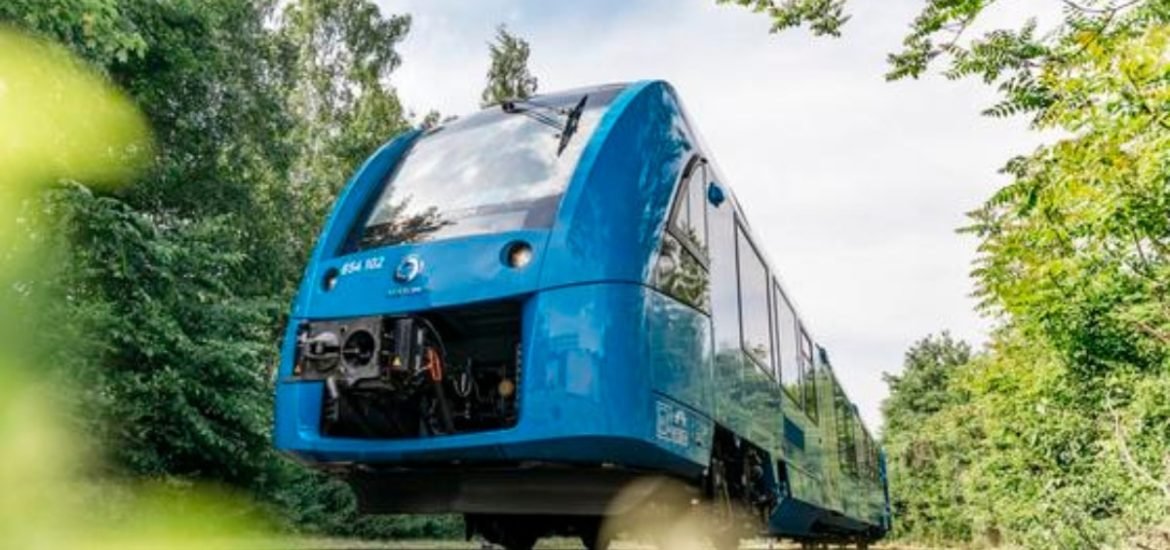
On 17 September, Germany launched two new hydrogen-powered trains. The trains were built by French train maker Alstom and are now operating on a 100-km route in Lower Saxony in northern Germany. If all goes well, Alstom is planning to add another 14 trains to the Lower Saxony fleet by 2021 and may also expand to other German regions. The launch signals a move toward costlier but more eco-friendly technologies to replace highly polluting diesel trains.
“Buying a hydrogen train is somewhat more expensive than a diesel train,” Stefan Schrank, a project manager Alstom told Agence France-Presse, “but it is cheaper to run.” The new trains can travel up to 1000 kilometres on a single tank of hydrogen and reach top speeds of up to 140 km/h. The train line will run between Cuxhaven, Bremerhaven, Bremervorde, and Buxtehude, and trains will be fueled via a mobile hydrogen filling station at Bremervorde.
The new hydrogen-powered trains are equipped with fuel cells that generate electricity from a chemical process combining hydrogen and oxygen. The only emissions are steam and water and excess energy can be stored on board in ion-lithium batteries that help maintain continuous power. The fuel cells, which sit close to the centre of the train where one car joins the next, are fed by a hydrogen tank and should be nearly silent.
Hydrogen fuel cells are a promising source of renewable energy already being used to power buses and cars. Trains are much heavier, which could have an even greater impact on cutting carbon emissions. The European Commission describes hydrogen as an energy carrier with “great potential for clean, efficient power in stationary, portable and transport applications.”
Although hydrogen may not seem like an obvious choice to power the clean train revolution, other feasible options present too many disadvantages. The cost of electric trains is prohibitive, as well as the infrastructure required for the successful implementation. Battery-powered trains would be too heavy and the heavier the train, the more power required to push it. The strong energy density of hydrogen makes it ideal for heavy loads and it can be generated fairly easily. Another advantage of hydrogen fuel cells is that instead of recharging them like a battery, you can simply refuel them the same way you would a gas or diesel engine.
Other European countries are hoping to follow suit and make the move toward hydrogen-powered trains, including Britain, the Netherlands, Denmark, Norway, and Italy. Canada is also making plans to adopt zero-emission trains. At present, hydrogen is not a 100% clean material, but the hope is that companies can achieve this in the near future.